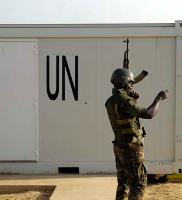The inadequate international reaction to September's premeditated attack on the African Union Mission in Sudan (AMIS) base in Haskanita, which killed 10 peacekeepers, has renewed concerns about the prospects for a successful peacekeeping mission in Darfur. Optimists hope that the conversion of AMIS into a joint African Union-United Nations mission (UNAMID) will prevent a recurrence of incidents like Haskanita by strengthening the peacekeepers' military capabilities. Already, however, severe problems have arisen with the planned transformation, which call into question UNAMID's ability to change matters fundamentally. Current plans are for UNAMID to have almost three times the number of troops as AMIS -- some 20,000 soldiers, 4,000 police officers, and 5,000 civilian ceasefire observers. Yet, given the time required to assemble and deploy what could become the largest U.N. peacekeeping operation in the world, most of the additional troops will probably not arrive in Darfur until next year. Until then, the existing undermanned and underequipped Afriance Union (AU) force, which has struggled in Darfur since 2004 with minimal success, will receive only a modest "support package" consisting of at most 5,000 additional military and civilian personnel, along with supplementary military equipment and logistical support. Although Western governments sought to secure passage of a strong mandate for UNAMID, the Sudanese government succeeded in watering down the text. To take but one example, although the resolution finally approved on July 31, UNSCR 1769, does reference Chapter 7 of the U.N. Charter, it lacks a provision requiring disarmament of the Janjaweed militia responsible for some of the worst violence. In addition, the text allows UNAMID peacekeepers to protect civilians and humanitarian relief workers, but not arrest their attackers or seize their weapons.
Hybrid African Union-U.N. Peacekeeping Force Likely to Fail in Darfur

